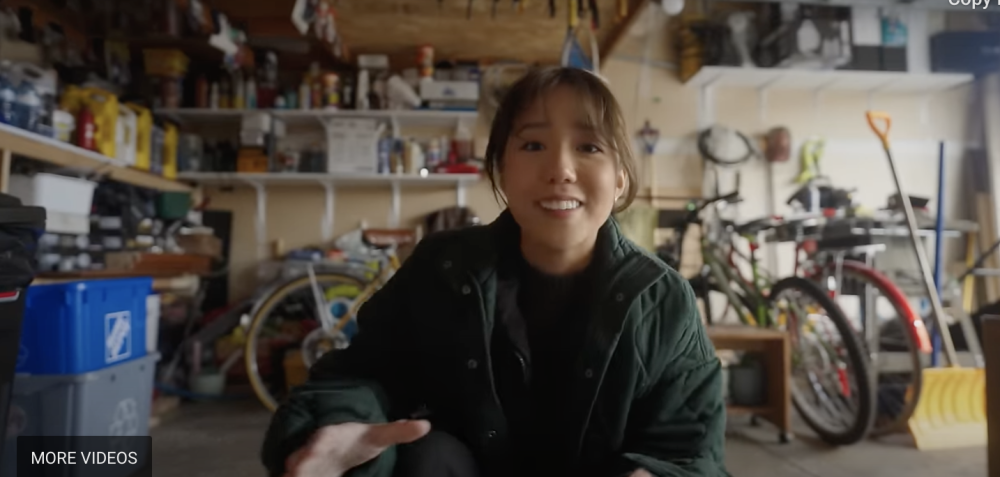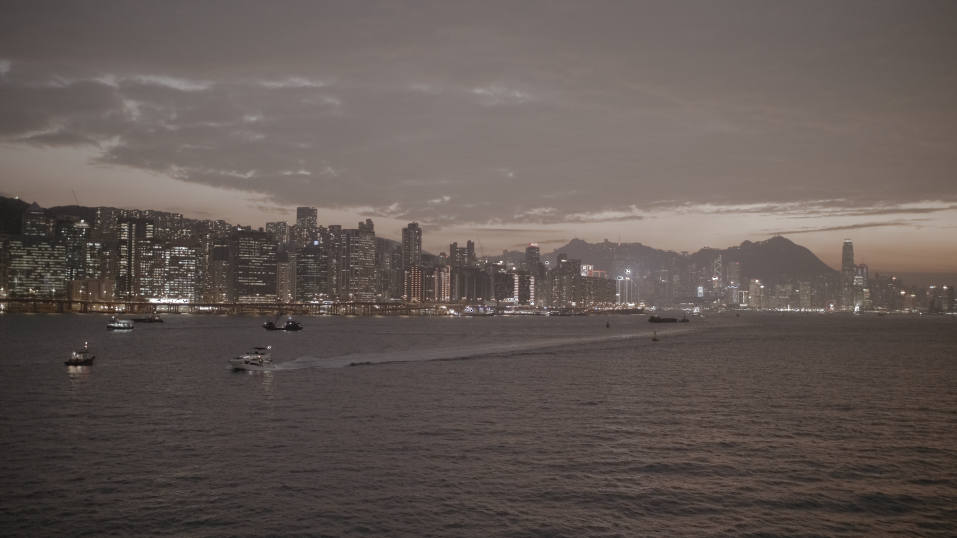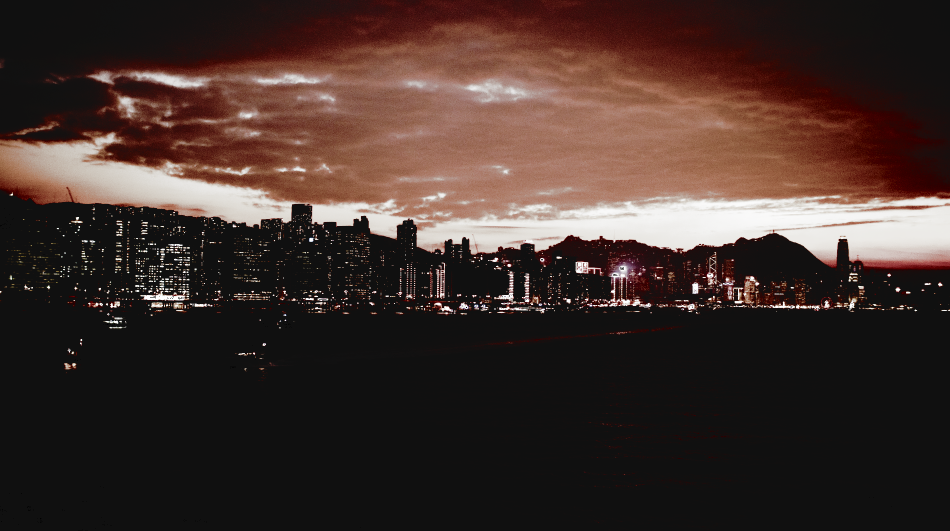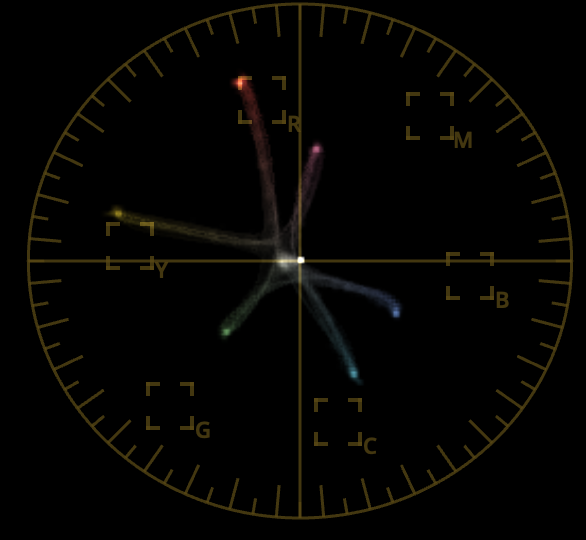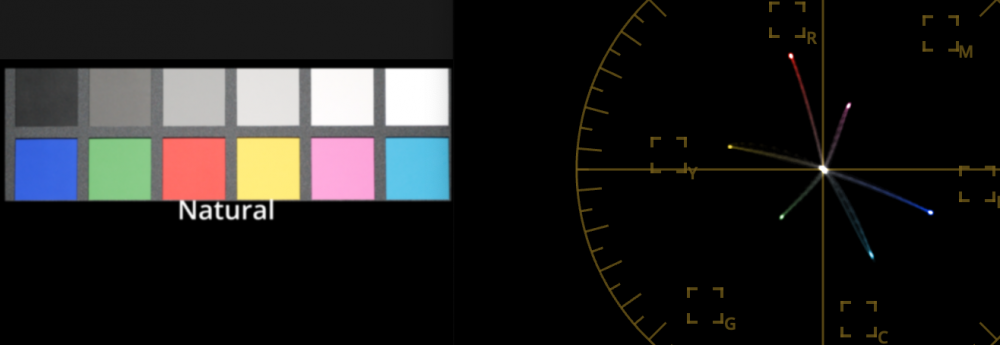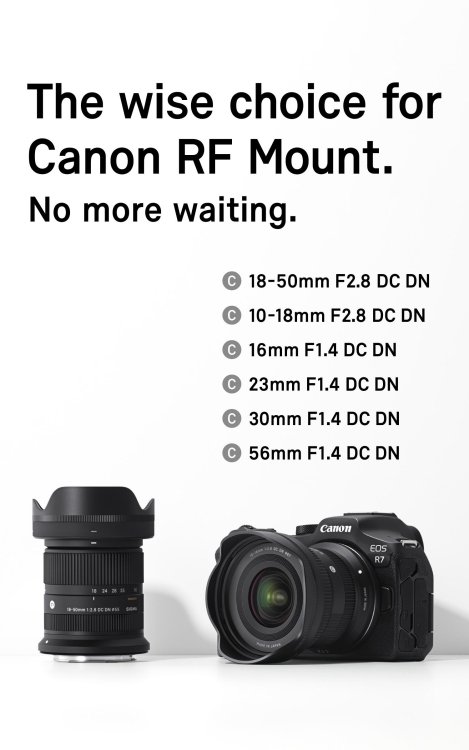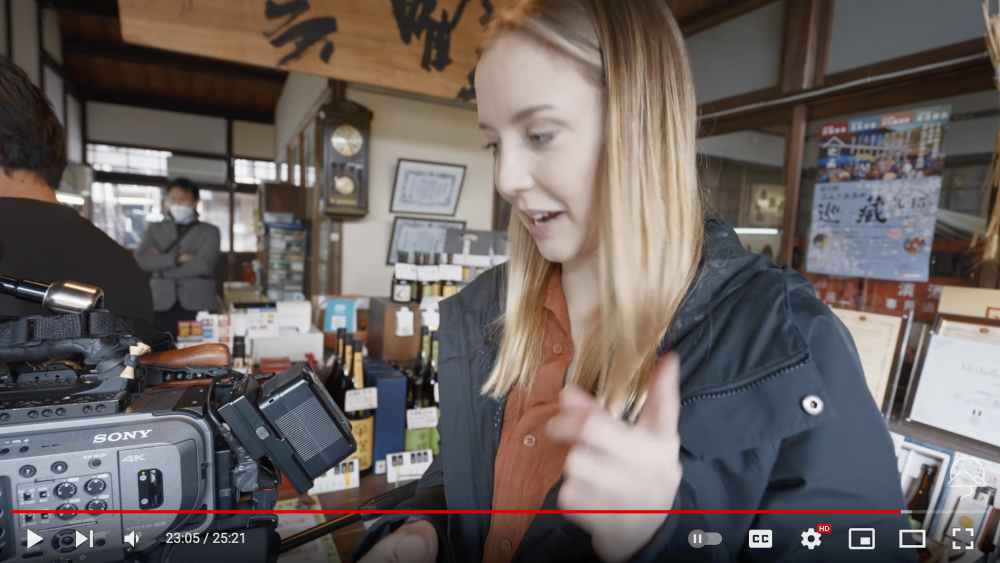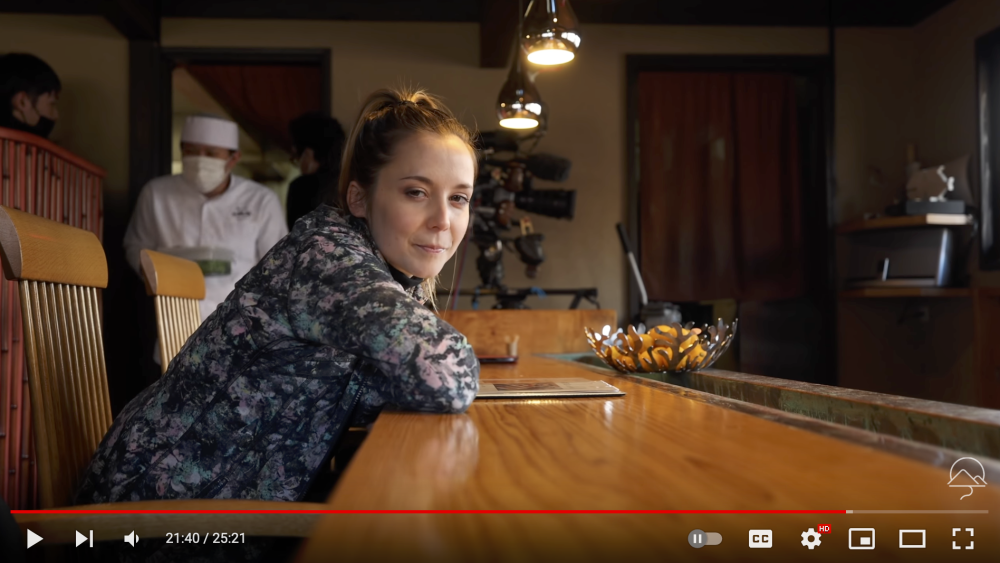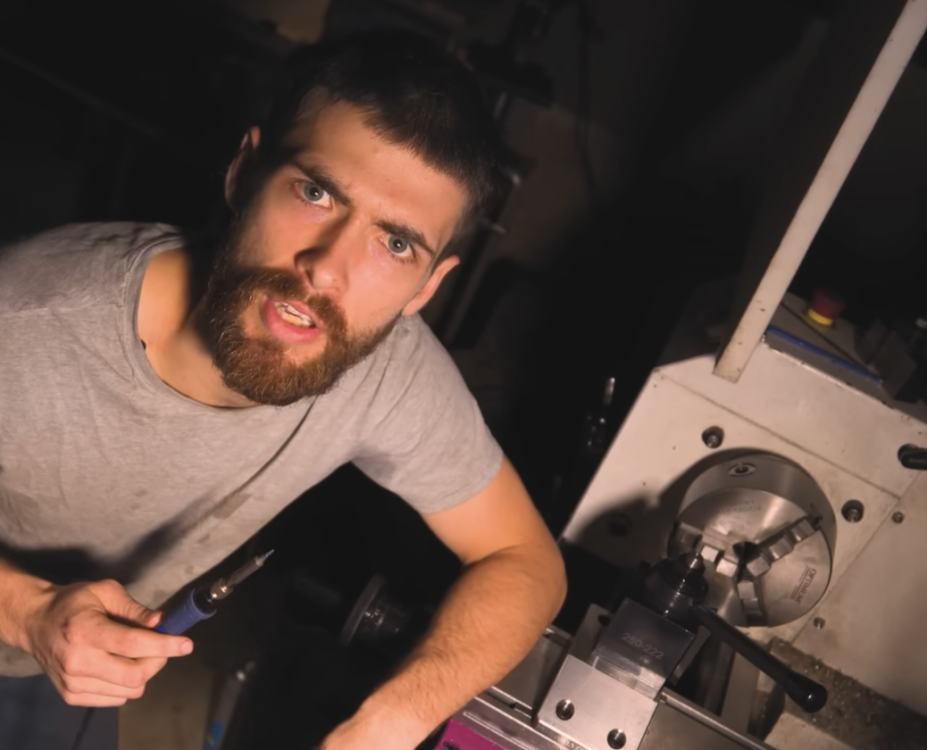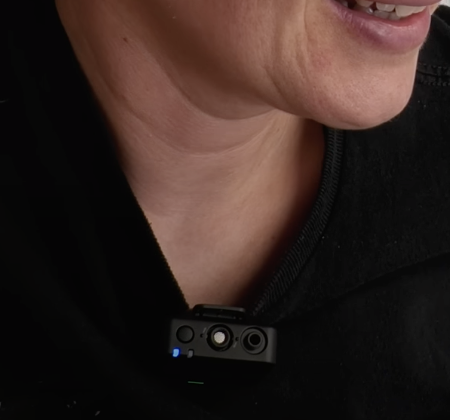All Activity
- Today
-
My personal preference is the Contemporary line from Sigma. I think these are great for photo and video users with manual aperture rings and a convenient AF on/off switch. Mostly f2 primes plus compact f2.8 28-70mm. All that is missing for me is something like a 70-180/200 under 1000g. If this line was available in Canon RF and they made that compact sub 1kg longer zoom that I need, I’d buy up some used R3’s (which are finally coming down in price) and happy days would follow.
-
Don't the Sigma Arts tend to also be large and fairly clinical? Just cheaper. Maybe that's what Canon is counting on.
-
PicoMic is still smaller and lighter, and the newer Pro version can use a lav mic. The receiver is bigger, but it's also the storage/charging dock for the transmitters, which is handy when you're going from mic'd to not mic'd, changing speakers often, etc. They just need internal recording and they'd be perfect IMO.
-
crispogba6 started following John Matthews
-
crispogba6 started following Tim Sewell
-
crispogba6 started following ac6000cw
-
crispogba6 joined the community
-
https://www.personal-view.com/talks/discussion/7580/driftwood-cluster-x-series-3moon-t7Ѕrіzz-t6nebula-t7drewnet-t9/p1
-
In case you haven't seen it, Riza did a video on how she shoots. TLDR; she has the most basic standard equipment, but creates the look in production design and in post.
-

Panasonic S5 II (What does Panasonic have up their sleeve?)
kye replied to newfoundmass's topic in Cameras
Can you dial in the amount of it? It might be good if used at a lower strength perhaps. One look that I quite like is when a GoPro or action camera is mounted to an off-road vehicle but has the stabilisation on and the image ends up being neither locked to the vehicle or locked to the scene but is somewhere in-between. I like the look because it is sort-of like how you experience very bumpy rides - you stabilise with your body and head but not perfectly. The fact it's moving and responding to the bumps against the vehicle also makes it look like there's a good human camera op too, which makes it look less artificial than if it was locked onto something in the shot. -
My impression was that people like the Alexa image for everything. The DR only matters if you're filming something that is high DR, and even then if you're watching it on a 709 display then the Alexa images have the same DR as every other camera. I also find that Alexas look green in camera tests, but probably the main reason for loving the Alexa look is that when used on big productions or by people that know how to use it, the images look great. However, the Alexa is just a very high quality RAW camera - the files that come out of it are as neutral as you can imagine. It's the paradox of modern camera discussions. The best looking images come from the most expensive cameras because the people who know that production design and colour grading is what makes great looking images are going to all that trouble anyway and so may as well rent an Alexa (or RED). Would the production have looked as good if they shot it on a P4K or S1H? I'd say maybe 95% as good - maybe 100%. But, because the people using the P4K or S1H aren't using them in situations where they've put as much effort into production design or colour grading, those images don't look as good. Not really my tastes. Riza does a lot of work to light herself really well, but the diffusion and colour grading aren't to my tastes. The image is too diffused and too cream and pastel green/brown for me. Most of that is in her production design, considering that the blue and yellow in this shot looks relatively normal: It's the "aesthetic" look that is trendy right now on YT, but Riza takes it to a whole new level. In a way it's similar to this palette: But compare the two shots above and notice that the bottom one is a lot crisper - Riza uses a huge amount of diffusion so everything looks hazy. Maybe it's just my associations.. when I grew up the interiors that were the right age to be old and shitty were the Mission Brown ones, and compared to the colour schemes of the time it just looked drab and dull, which combined with the fact it was old and falling apart, really didn't enamour it to me! I suspect that for the cultural references of the people making this content right now, this probably balances out the previous aesthetic choices in a way that makes them feel better about themselves and about life etc. In times of change people get pretty stressed and going for a soft brown and green palette it's probably unconsciously evoking nature and naturalness in some way - which makes sense if you think about the existential threats of climate change and AI that we are currently facing. People of this age are having climate anxiety in a big way, so it's a real thing in their world.
- Yesterday
-
 kye reacted to a post in a topic:
Sigma Announce RF Mount Lenses
kye reacted to a post in a topic:
Sigma Announce RF Mount Lenses
-
Ha - what a workflow! Considering that normally you'd want to grade in between the two emulations (negative and print films) that's not exactly a good setup!
-
The 18-50 will be a really nice run and gun lens on the R7 for not too many pennies Exactly what the cheaper Canon bodies needed, as the full frame RF lenses are completely wasted on them. Small, cheap, fun, yet high quality - that is what the Sigma APS-C lenses bring to the table. The 23mm F1.4 looks like one to get as well. Will be interesting to see if this paves the way to full frame Sigma RF releases and if Canon have decided that their too big, too expensive and too clinical technically perfect full frame RF lenses are tanking the system, as I have heard the RF lens sales are going a bit iffy. Also with Nikon and the Z8, Sony and their successes, and Fuji taking a slice of the take with GFX, I think the high-end of Canon's line-up will need some Sigma help pretty soon.
-
RobertLig started following Panasonic GH6 , Newbie to GH2 Hacks which one is best to start with , Seeking info on lens: Minolta 135mm f/2 MD and 1 other
-
I was out-of-date and it's not as bad as I remembered, but still not great. But yes, I'd say it's a stretch that professional colorists are spending a lot of time in Nitrate. https://www.filmconvert.com/blog/filmconvert-nitrate-for-aces-workflow/
-
 eatstoomuchjam reacted to a post in a topic:
Shooting a short
eatstoomuchjam reacted to a post in a topic:
Shooting a short
-
what about this image ? Fan or no?
-
 John Matthews reacted to a post in a topic:
Panasonic S5 II (What does Panasonic have up their sleeve?)
John Matthews reacted to a post in a topic:
Panasonic S5 II (What does Panasonic have up their sleeve?)
-
To what degree is Alexa’s image desired due to its color rendition versus its unbelievable dynamic range? When I see LUTs that attempt to emulate Arri, I like the balance of highlight and shadows but I don’t care for skintones. Again, more green than my brain is biased to.
-
Here's a few images from the GF3, not exactly the best video camera in the world, but even it has some nice colour. These are all shot with the Mir 37mm f2.8 with speed booster and wide open, and all shots are SOOC: Obviously these are very challenging conditions with mixed colour temps and low light so the ISO probably wasn't at its native setting either, but not bad. These all look a bit flat to me, even from such an old camera with a low DR compared to now, but my literally my first thought is to increase contrast and then evaluate the saturation. I've analysed GX85 colour before in this thread: https://www.eoshd.com/comments/topic/59121-gx85-alexa-conversion-and-colour-profile-investigations/ The default profiles are like most modern profiles, and bear a resemblance to some of the best colour in the business... GX85 Natural Profile: Alexa: To get a sense of how similar these are, if they were technically correct those lines would go straight to the middle of the reference boxes on the overlay. Obviously they're way off, but in a relatively similar way. Obviously this is a dramatic simplification of the whole colour science, but it gives a sense of it. My experience of the GH5 is that it it a real work-horse and that everything has been thought-through so that it quietly does the job and stays out of your way. The image was practically indestructible, even if you tried. I've posted these previously, but here's what happens if you try to break the image.. Here's the flattest image I could find - SOOC HLG: With the most extreme amount of contrast you can make with the curves tool (literally a vertical line): I think that was the 150Mbps IPB codec too - the 400Mbps ALL-I might be better again. When I had the XC10 and was shooting 8-bit C-Log I was trying and failing to get good colour from it and trying to learn colour grading and colour management etc, and I was watching all these colour grading tutorials of people grading RAW Alexa and RED and BM footage and there was this smoothness and elegance in how it all worked - they adjusted this control and that control and the footage just glided around like it had infinite subtlety and richness in the files, but the XC10 footage was just the opposite. Then I bought the GH5 and the files felt exactly how all those colour grading tutorials looked - the files were just like velvet. Of course, it's not quite as good as the high-end cine cameras, but the footage is seriously malleable and if you know what you're doing then you can really extract great images from it. All modern cameras are like hypercars and most film-making uses only a tiny fraction of their potential.
-
Panasonic S5 II (What does Panasonic have up their sleeve?)
ac6000cw replied to newfoundmass's topic in Cameras
Definitely - it's why I like the way Olympus/OMDS IBIS operates on the OM-1 & E-M1 iii. When I use proDAD Mercalli for stabilisation in post I usually choose the 'Glide Cam' option, which gives a floatier feel with lower warping artefacts (and less cropping) than the default 'Universal Cam' setting. -
 kye reacted to a post in a topic:
Color - SOOC vs. LUTs/Grading
kye reacted to a post in a topic:
Color - SOOC vs. LUTs/Grading
-

Panasonic S5 II (What does Panasonic have up their sleeve?)
John Matthews replied to newfoundmass's topic in Cameras
I think there's a fine line between making stabilization appear natural. I think the gold standard will continue to be gimbals and steadicams with experienced operators. The "pinball" vlogging effect is also apparent on GoPros and such and I think most people don't notice that much. Again, if you're operating the camera and filming others, you don't notice and it looks amazing, like no other FF camera. -
 bjohn reacted to a post in a topic:
New Micro Color Panel
bjohn reacted to a post in a topic:
New Micro Color Panel
-
Panasonic S5 II (What does Panasonic have up their sleeve?)
ac6000cw replied to newfoundmass's topic in Cameras
Thanks for the info. Robert May also commented in his video that it didn't seem to improve long telephoto stabilisation. Not that surprised as OIS in the lens can be as or more effective than IBIS and/or EIS at long focal lengths, at least for pitch and yaw. Now that the enhanced EIS is out in the wild, doubtless Panasonic will be getting lots of feedback, so there may be performance improvements to it in the future. For the vlogging situation, it sounds like it needs to be made a bit more 'floaty'. -
 SRV1981 reacted to a post in a topic:
Color - SOOC vs. LUTs/Grading
SRV1981 reacted to a post in a topic:
Color - SOOC vs. LUTs/Grading
-
 ac6000cw reacted to a post in a topic:
Sigma Announce RF Mount Lenses
ac6000cw reacted to a post in a topic:
Sigma Announce RF Mount Lenses
-
I agree (having owned 10 of their hybrid cameras and 2 camcorders in the last 15 years). Panasonic has a long heritage in professional video (going back over 60 years) and it shows. I think the GH5 became a very popular camera for video because it was a good all-round, reliable, video tool in most situations, rather than excelling in any particular area at the expense of others or having a specific SOOC 'look'. For a bit of fun, this is 9 year old, basically SOOC, FHD 50p video from a Panasonic LX7 'enthusiast compact' with a small 10MP 1/1.7" sensor. There's some obvious aliasing/jaggies and I think the reds/oranges in particular are exaggerated. But for a camera launched in 2012 that fitted in the palm of one hand and weighed 270g I think it is reasonably decent (and could be improved in post). SOOC video from a G6, GX85 or G80 would leave it in the dust though, having much less aliasing and better balanced colours.
-
Sigma have announced that they are releasing a range of RF mount lenses, indicating that Canon have softened their “no 3rd party lenses” stance. I say softened rather than abandoned as, whilst these lenses are fully licensed by them, they do not include any full frame lenses. At least for now. The initial offerings are the two f2.8 zooms and four f1.4 primes from Sigma’s Contemporary range that have been available in other mounts for a few years now. The 18-50mm is the first one that will be available but it is not until July and the others will follow in the Autumn. No word on prices but they are usually similar in different mounts so you can take that as a rough guide, although maybe there will be an additional cost on top for the official licensing from Canon. Good news for owners of crop RF cameras to have different options and also for people using the KOMODO (or maybe we should call it the NIKOMODO now). Full details here https://www.sigma-global.com/en/contents/sigma_rfmount_lenses/
-
 Emanuel reacted to a post in a topic:
Shure MoveMic
Emanuel reacted to a post in a topic:
Shure MoveMic
-
 mercer reacted to a post in a topic:
Color - SOOC vs. LUTs/Grading
mercer reacted to a post in a topic:
Color - SOOC vs. LUTs/Grading
-
My expertise is very far from masterclass.. if you think it is that level then it just shows how little you understand about the subject. If you were being sarcastic then that's just not very nice, and really just makes a comment about how badly you handle criticism. If you weren't being sarcastic, then you obviously have some sort of belief about cameras and colour science that is holding you back from hearing what everyone seems to be telling you. You obviously took my comments personally, which of course you're free to do, but this isn't a discussion about how we can all make each other feel loved and supported - this is a discussion about something tangible and there are concepts to understand, so if you aren't understanding them then pointing that out is a kindness, because it provides you the opportunity to re-evaluate and try and listen to peoples comments in a new way. The concept you're not understanding is that no-one who cares about colour grading enough to talk about it online but wouldn't be willing to change camera settings, upload LUTs, or do basic adjustments in post. Even the "Buy my LUT" YT camera bros will tell you that you need to grade underneath it, at least making minor changes to the contrast, WB, exposure, saturation, and the like. The people that are willing to talk about colour grading online but aren't willing to actually do anything about it aren't interested in colour science, they're interested in trolling or are lonely or are attached to a fantasy they can buy great results or some other motivation. The people who want good colour are willing to at least lift a finger - in post to change a setting here or there - to get better results. The differences in these side-by-side comparisons you're making is, in many instances, a single adjustment in camera or in post, taking literally a few seconds... far less time than you've invested in arguing against practically any sensible advice given in this or the many other threads you've started.
-
 SRV1981 reacted to a post in a topic:
Color - SOOC vs. LUTs/Grading
SRV1981 reacted to a post in a topic:
Color - SOOC vs. LUTs/Grading
-
Post. I trust my calibrated monitor in a controlled room better than the one on set. So what I do with any new camera is I do a bunch of tests to find a setting that I like, then I shoot everything in that setting and adjust in post as needed. That way I am very familiar with what I can or can't do with that setting. I will often do tests to create specific color node graphs ahead of time, designed to be applied in post. But on the shoot I want everything to be familiar, even when I know based on my tests what it will transform into. That's not to say I'm good at cinematography. But I do think I'm good at not wasting people's time. I test everything ahead of time by myself or with the people leading the project, then we maximize set time for the actors and crew. No fiddling with settings while people are waiting around.
-
That’s a better way of saying it. Do you remove it internally or in post production? I think you don’t get it or feel the original query is beneath your masterclass expertise - no need to comment. Ever.
-
You're still not getting it. If you were going to shoot SOOC, you would adjust the camera settings to dial in the look you like. You'd be colour grading in-camera rather than in post. It's well known that Panasonic users will adjust the Hue in the camera in order to shift the skin tones to where they want so SOOC looks to their tastes. The GH5 (and many other cameras I'd imagine) have manual temp and tint controls so you can dial in whatever WB you want manually. Also, if you were going to put a LUT into the camera, you'd dial it in first, making it how you wanted. I seriously don't think that there is anyone that is interested in good colour that isn't willing to do at least something to get it - not willing to audition and customise the profile in-camera AND not willing to even do light edits in post but yet still wanting good colour enough to change camera systems entirely is just silly. It's like saying you want to make the best adventure films possible but you're not willing to leave your house. Most cameras have too much DR to look good SOOC because the profiles won't look contrasty enough, so a lower DR camera is your best bet. The GX85 is pretty good in this regard. As well as for other aspects of the film-making process that shall remain nameless and unacknowledged. Panasonic actually has really nice colour - it's just not cool to say it out loud on the forums but I hear it from people in private quite often. Here's a post with a bunch of GX85 images that are all SOOC: https://www.eoshd.com/comments/topic/74148-making-the-most-of-the-iphone-gx85-and-gh5-and-shooting-in-the-real-world/?do=findComment&comment=569842 No. No-one "keeps" the green in the Alexa image. Anyone shooting with an Alexa will be colour grading it. Anyone who shoots on Alexa and ends up with a green tinted image WANTED that look, and CREATED that look specifically. It didn't stay there by default due to the lack of anyone doing any colour grading. That green look that I showed in feature films is actually not very easy to get - just because you don't like it doesn't mean it's not desirable and nuanced. Think about this some more... You saw that side-by-side with the Alexa and P4K. What did that show you? Even in very high DR situations, the P4K is a simple matrix transformation away from looking like an Alexa. But, P4K footage from all these influencers and low-budget film-makers doesn't look like Alexa footage - not even slightly! Why? Because the look of TV and movies isn't created by the camera - it's created by the lighting, production design, and colour grading! Student films don't instantly look like movies when they buy an FX3. Some years ago a YouTuber I follow hosted a TV show and vlogged the BTS and got a few production images to share. There was one that was side-by-side. This is the image from her A7S3 - a very capable camera - with a pretty standard colour grade: This is an unused production shot from the Sony cinema camera right next to her... Here's the thing... These cameras have almost everything in common and yet the image is so different. Hannah isn't a colourist but isn't a noob either - her videos will be colour graded to a reasonable extent and she regularly makes beautifully looking images and sequences in her travels around Japan. So what's left? Everything except the camera.... So no, if even a tourism travel TV show can colour grade their images so far from where they started, then no Alexa footage ends up green by "keeping" the green in.
-
I wonder who these mics are actually for? I mean, influencers have gone away from hidden microphones in order to look authentic: and even people taking the piss out of them... The pros are going to actually mic people up properly. So, who is left? Is there some hidden niche of people who care about speed and also hiding the mic? My experience of the people that are just using the little matchbox sized mics is that they aren't trying to hide them either: Even the street-interview people aren't hiding them:
-
What I like about recent Canon C line is that the skin often has a bit more separation from other colors. I don't know that I prefer red/magenta, but it's not nice if skin gets muddled with everything else. I wouldn't say all Canon, because I was honestly never a fan of the C100's image for the few shoots I used it on. I don't know that I especially like color on the Panasonic S-series as SOOC it tends to exaggerate yellows. It's a great camera and does what I need at an unbeatable price though.
-
I’ll have to find the examples I’ve seen where even with the same LUT, say Phantom - the cameras produce different images. You could probably edit in post to get them nearly identical unless you a/b but the question, for me is what can take the least time. I’m realizing Canon and Lumix are my answers for this discussion. Will check this too! Thanks 1000% this. If I could get this image in a smaller body I’d do it in a heartbeat. Above my pay grade but I’d say some creators still keep some of that green in and I dislike it compared to movies or shows that accentuate pinks and magentas. Just my preference for watching cinema and producing


